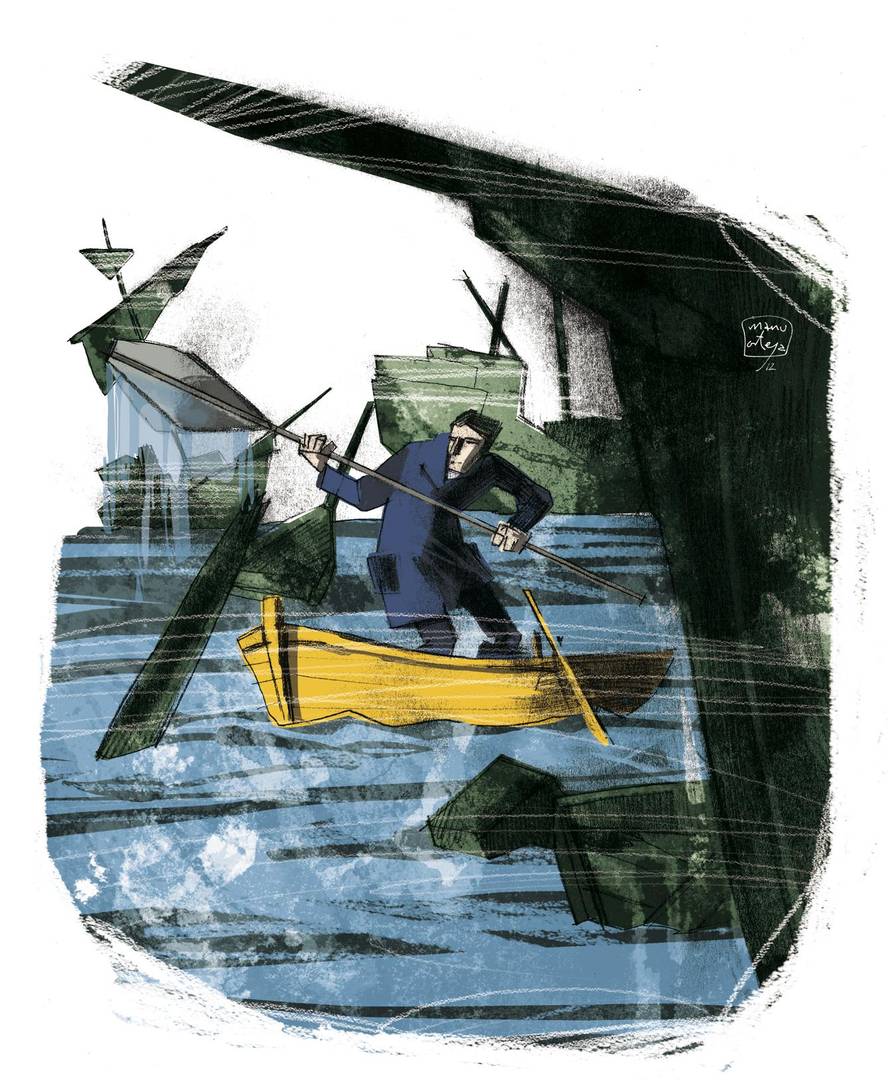The secrets of Aingi
"No one has ever found a mature eel, no one has ever seen the testicles of the eel, despite countless attempts made over the centuries," Sigmund Freud wrote in the introduction of the first scientific article published in 1877, at the age of 21.
Two years earlier, in the summer of 1875, he spent a week in the zoology laboratory of the University of Vienna. Carl Claus was the laboratory director, a prestigious anatomist and one of the great diffusers of Darwin's ideas. Claus arrived at the University of Vienna to modernize the Department of Zoology and, among other things, obtained money to install a marine biology station in Trieste, in the Austria-Hungary Empire. This initiative included scholarships for the best students to do research work. Freud was Claus' first choice.
He arrived in Trieste in March 1876. By then he already knew what his project was: to find testicles of unseen eels. Freud spent hours and hours between the mucous membranes and the odors of the eels, making dissections and analyzing the samples under a microscope. He dissected hundreds of eels. "As Ainhoa doesn't write a diary," a friend wrote, "the only way to know the genre is to open it and take samples. But in vain all the eels that I have opened are females." Yes, in vain were all Freud's efforts. He found no eel testicle. Freud's career began with frustration.
As Freud said in the introduction of his article, the mystery of the sex of eels was ancient. Very old. Aristotle was also surprised that he never found eggs or sperm in the eels. This is what he says in his book Historia animalium: "No eel containing seminal fluid or egg has ever been captured and, open in half, has no seminal or uterine tube inside. Of all blood animals, this is not the only species that occurs either from reproduction or from eggs. This is evident, since in some ponds of the marshes, once completely emptied and extracted the mud, they come out again after the rain... They are born from the so-called "viscera of the earth", small animals that are formed in silt with their own creation...".
Aristotle succeeded in one thing: he realized that the angles were young eels and observed that they also appeared in the sea. But to prove that the rest was wrong it took many centuries.
XVII. In the middle of the 20th century, the Italian King, observing that the adult eel moved towards the sea and that the young people went up the river, proposed that the reproduction of the eels was produced in the sea.
In the Freudian era they did not know much more about the life cycle of eels. And Freud could not contribute much either. But a decade later, by the hand of the French zoologist Yves Delage, another clue was coming.
Delage looked at other curious fish. In an aquarium there were several specimens of Leptocephalus brevirostris trapped in the sea. They had about eight centimeters, leaf shape and totally transparent body; in the water there were hardly any pairs of eyes that walked from one side to the other. But after a few days their appearance was changing and… they became angles! Those curious fish were the eel larvae!
The young Danish biologist Johannes Schmidt had learned it well when, in the spring of 1904, he found a species west of the Faroe Islands. But he was surprised: Was it possible that the eels that lived in the rivers of Denmark, so far away, in the middle of the Atlantic, were born?
A year earlier Schmidt married the daughter of the owner of the Carlsberg brewery and participated in oceanographic expeditions funded by the brewery. From 1904, Schmidt was going to make other expeditions behind the eel larvae. And he saw that the more he entered the Atlantic, the smaller the larvae that were captured. At the end, at 18, he ended up in the Sargasso Sea. There he ran over the little ones of antiquity.
He concluded that the eels put in the area. However, he could not observe either the reproduction or the setting. No one has yet observed it.
"Among fish species there are no other cases where a quarter of the planet's circumference is needed to complete its life cycle," Schmidt wrote in 1923. With data collected in almost 20 years, Schmidt concluded that the 10 mm larvae of the Sargasso Sea traverse the Atlantic in the Gulf Stream and arrive almost three years later on the European coasts, with 75-90 mm, to become angles and ascend in the rivers. And that, in turn, adults make this journey of more than 5,000 kilometers to return to the Sargasso Sea.
Subsequently it has been discovered that the body of the eel suffers important changes to make this trip. For example, the eyes rise and the sides of the body acquire a silver color (much more appropriate to camouflage in the sea). In addition, as soon as they enter the sea they are completely atrophied the digestive system, so they can not feed during the whole trip. On the other hand, during the trip sexual organs develop. No wonder, therefore, that Freud did not find eel testicles.






